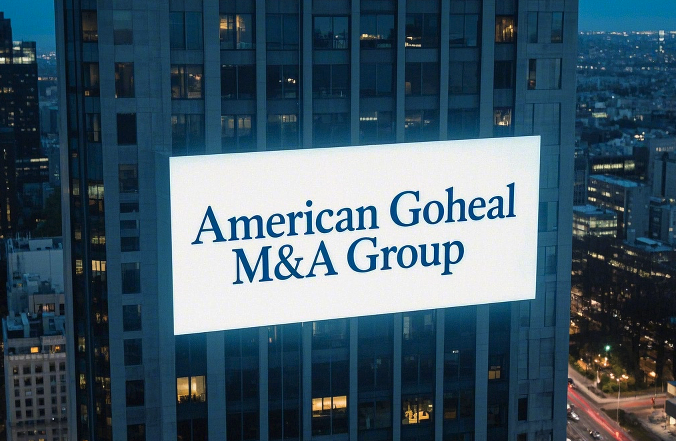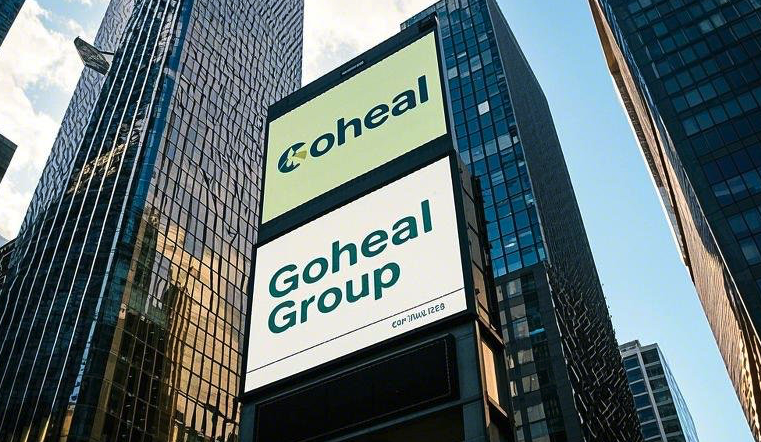"Those who know are not as good as those who like it, and those who like it are not as good as those who enjoy it." This famous saying from the Analects of Confucius vividly reveals the importance of a deep understanding of things. In the process of acquiring the controlling rights of listed companies, evaluating the true value of the target company is undoubtedly one of the most critical links. In recent years, the cost method has been widely used as a valuation method in the acquisition of controlling rights, especially in some specific situations, it has shown unique advantages.
However, how to balance the pros and cons of the cost method and how to accurately evaluate the value of the company are still hot topics in the industry. As an industry-leading M&A consulting company, Goheal has made a profound analysis of the pros and cons of the cost method through long-term industry experience accumulation, providing useful guidance for investors.

American Goheal M&A Group
As an asset valuation method, the cost method mainly estimates the value of the target company's assets by evaluating their replacement cost. In short, this method believes that the value of a company is equal to the cost of its assets, even if the market value or potential of the assets may be higher than the cost. In some specific M&A situations, the cost method can provide the acquirer with a quick and direct valuation method, especially when facing some companies that do not have clear revenue expectations or are difficult to value in the market. The cost method has become an effective tool for measuring the value of the company. Goheal has flexibly applied the cost method in many projects to help clients obtain considerable M&A returns.
However, any method has its limitations, and the cost method is no exception. The core problem of the cost method is that it usually ignores the target company's future revenue potential and changes in the market environment. Therefore, in most cases, the cost method cannot accurately reflect the company's true business value, especially for those companies with innovation potential or unique market position. What's more serious is that the cost method is also prone to overestimating or underestimating the company's asset value, which will bring certain risks to the acquirer's decision-making. How to avoid these risks and accurately evaluate the company's value through more scientific means is a challenge that every M&A decision maker must face.
Advantages of the cost method: simplicity and practicality
The reason why the cost method is widely used in M&A transactions is mainly due to its simplicity and operability. Compared with the market approach and the income approach, the cost approach does not require the prediction of future revenues and does not rely on market price fluctuations, which makes it a relatively safe choice when evaluating some companies that lack market pricing information or whose businesses are difficult to quantify. For example, for some companies that are strategically important in specific fields, or those startups that have not yet made profits at certain stages, the cost approach can provide acquirers with a relatively clear valuation framework by measuring the replacement cost of their assets and equipment.
In addition, the cost approach also has high transparency and reliability. Whether it is hard assets or intangible assets, a relatively clear valuation result can be given through detailed accounting of various assets. Moreover, the application of the cost approach in financial statements is very direct and clear, and investors and acquirers can quickly understand the logic behind it. This is one of the key factors that Goheal emphasizes when providing M&A consulting to clients. Through the cost approach, the acquirer can directly evaluate the assets, liabilities and financial health of the target company, providing a strong basis for further negotiations and decision-making.
Limitations of the cost approach: Ignoring future potential and market dynamics
Although the cost approach has obvious advantages in certain circumstances, it also has limitations that cannot be ignored. The most direct disadvantage is that the cost method relies too much on the value of current assets and ignores the potential for future development of the target company. In many cases, the value of a company is not entirely determined by its current assets, especially in high-tech and innovative companies, where future revenue, market share and brand value are often its core competitiveness and true value.
For example, the market value of some Internet companies or start-ups far exceeds their current total assets. If they are valued solely by the cost method, the acquirer may underestimate their potential value, resulting in unnecessary missed opportunities. This is why many investors, in addition to using the cost method, will also combine the market method or the income method to comprehensively analyze the company's potential and future revenue forecasts when evaluating target companies.
Another significant limitation is that the cost method does not take into account the dynamic changes in the market. Factors such as market fluctuations, technological advances, and policy changes may have a significant impact on the company's future performance, and these factors cannot be reflected through simple asset valuation. Goheal found in multiple cases that although the cost method can help acquirers gain a preliminary understanding of the target company's financial situation, its evaluation results may be far from comprehensive and accurate for the value of enterprises in dynamic markets.
How to avoid the shortcomings of the cost method: the application of comprehensive evaluation methods
Facing the limitations of the cost method, more and more M&A experts have begun to emphasize that a single valuation method cannot fully reflect the true value of a company. In his long-term experience in capital operation, Goheal found that the most effective way is to combine the cost method with other evaluation methods to form a multi-dimensional evaluation framework. By comprehensively considering the market method, income method and cost method, the acquirer can make a more comprehensive and accurate assessment of the value of the target company.
The market method can help the acquirer understand the target company's positioning in the market and its potential market value by referring to the market value or transaction price of similar companies; the income method evaluates the company's intrinsic value by predicting future cash flow or profitability. These methods can effectively make up for the shortcomings of the cost method that ignores future potential and market dynamics, making the valuation results more objective and true. In actual operations, Goheal provides clients with more robust M&A advice by integrating and applying multiple methods, helping them avoid the risks that may be caused by a single valuation method.
Conclusion: How to evaluate the true value in the acquisition of controlling rights of listed companies?
In the acquisition of controlling rights of listed companies, evaluating the true value is a complex and challenging task. As a traditional valuation tool, the cost method has certain advantages, but it also has significant limitations. How to make up for the shortcomings of the cost method through other methods on the basis of preliminary valuation, and achieve a comprehensive and multi-angle value assessment, is an important issue that every M&A decision maker needs to consider. Goheal's experience in the M&A industry shows that the comprehensive use of different valuation methods can help acquirers more accurately grasp the true value of the company and make more rational acquisition decisions.
In the future, with the further development of the capital market and the increasing complexity of M&A transactions, how to formulate more accurate valuation strategies will become an important topic for every investor and entrepreneur. Regarding the valuation challenges in the acquisition of controlling rights of listed companies, we will continue to pay attention to and continuously update new evaluation methods. Readers are welcome to share your views and experiences in the comment area, let us explore this world of M&A full of variables together!

Goheal Group
[About Goheal] Goheal is a leading investment holding company focusing on global M&A holdings. It has been deeply involved in the three core business areas of acquisition of controlling rights of listed companies, M&A and reorganization of listed companies, and capital operation of listed companies. With its deep professional strength and rich experience, it provides enterprises with full life cycle services from M&A to reorganization to capital operation, aiming to maximize corporate value and long-term benefit growth.